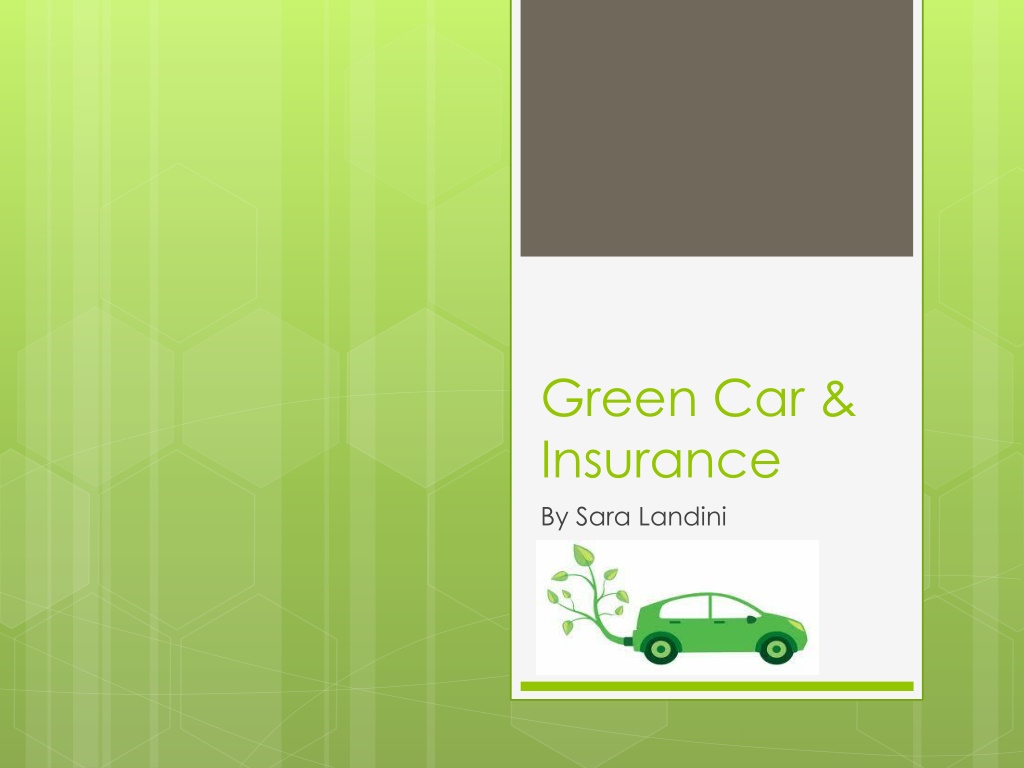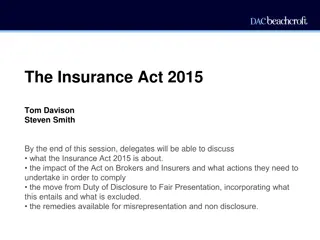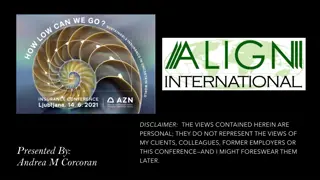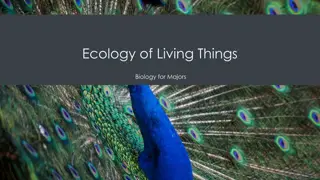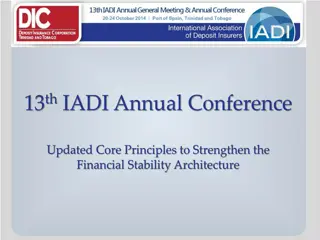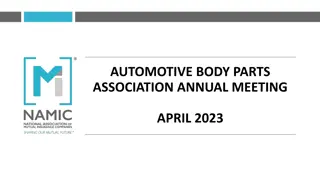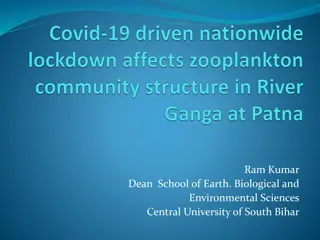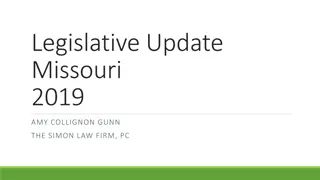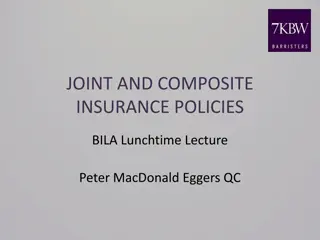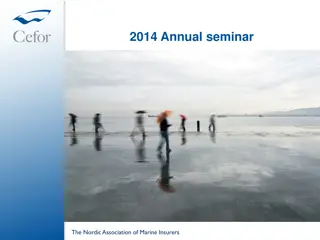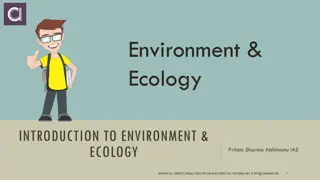How Insurers Contribute to Ecology
Some car insurers help offset damages to the environment caused by car CO2 emissions by contributing to projects like reforestation, renewable energy sources, and ecological education. Other insurance policies provide extra discounts for electric or hybrid car owners. Some insurers also offer eco-friendly repair networks and eco-driving policies, considering factors like vehicle model, fuel type, and emissions when determining premiums. Eco-driving strategies aim to reduce greenhouse gas emissions through changes in driving behavior and vehicle maintenance.
Download Presentation

Please find below an Image/Link to download the presentation.
The content on the website is provided AS IS for your information and personal use only. It may not be sold, licensed, or shared on other websites without obtaining consent from the author.If you encounter any issues during the download, it is possible that the publisher has removed the file from their server.
You are allowed to download the files provided on this website for personal or commercial use, subject to the condition that they are used lawfully. All files are the property of their respective owners.
The content on the website is provided AS IS for your information and personal use only. It may not be sold, licensed, or shared on other websites without obtaining consent from the author.
E N D
Presentation Transcript
Green Car & Insurance By Sara Landini
How Insurers Contribute to Ecology Some car insurers help offset some of the damages to the environment caused by car's CO2 emissions. They do this by contributing to projects like reforestation, renewable energy sources and ecological education in everyday life (See particularly UK, USA, Israel, Sweden).
How Insurers Contribute to Ecology In other cases insurance policies provide an extra discount on premium for electric or hybrid car owners (See particularly UK, Switzerland, Dutch).
How Insurers Contribute to Ecology Some insurers are also providing eco- friendly repair network. Their appointed mechanics recycle materials like used oil and old bumpers. Moreover they have an Ethical Engagement Policy to guide the social, ethical and environmental aspects of their investments which includes human rights, sustainability and labour rights (See particularly UK, Spain, Dutch).
How Insurers Contribute to Ecology Some companies provide a formula pay as you drive . Pay-As-You-Drive (PAYD) Vehicle Insurance (so called Distance-Based, Usage- based, Mileage-Based, and Insurance Variabilization) means that a vehicle s insurance directly on how much it is driven during the policy term. Premiums are calculated taking in to account the following factors: vehicle- mile, vehicle-kilometre or vehicle-minute. Per-Mile Premiums premiums are based
How Insurers Contribute to Ecology Some insurance companies offer eco-driving policies (See particularly Italy). While the car insurance works, in order to determine annual premium, they consider: - The year, model, transmission and fuel type of the car - The number of kilometres (or miles) the car is driven in 12 months - The emission factor for car s fuel.
Eco-driving and Motor Insurance Several strategy to reduce greenhouse gas (GHG) emissions. Eco-driving is a collection of changes to driving behaviour and vehicle maintenance designed to impact on fuel consumption and greenhouse gas (GHG) emissions in existing vehicles. studies indicate eco-driving as a
Eco-driving and Motor Insurance Some Eco-driving basic techniques are: 1- Maintenance. Key parameters to maintain are: proper tire pressure, wheel alignment, engine oil with low kinematic viscosity. 2- Driving lighter and/or lower-drag vehicles and minimizing the amount of people, cargo, tools, and equipment carried in the vehicle (removing common unnecessary accessories such as roof racks, brush guards, wind deflectors, etc., driving with the fuel tank mostly empty and tanking more frequently). 3- Maintaining an efficient speed. Optimal efficiency can be expected while cruising with no stops, at minimal throttle and with the transmission in the highest gear. 4- Optimal choice of gear (in case of manual transmission). 5- Experts recommend accelerating quickly and smoothly. .
Eco-driving and Motor Insurance Insurers can represent an instrument to improve Eco driving. Some important actuarial studies done in the last 10 years indicate a direct connection between efficient drivers and those drivers with fewer preventable accidents. So Eco driving can have a direct concern also for insurers since Eco driving can reduce accidents' risk. At the same time insurers can promote eco-driving by offering motor insurance policies at a lower price to eco- drivers.
Eco-driving and Motor Insurance It s possible to control eco-driving habits trough a black box installed in the car and through car inspection. We think that such models need to be implemented and widely diffused, but we have to consider some limits arising from privacy regulation. About black boxes privacy lawyers say that government regulators and insurers are spreading an intrusive technology without first putting in place policies to prevent misuse of the information collected.
Brazilian answers to the questionnaire (byMARCUS FERNANDES and MARCO AUR LIO MELLO ) Basically not. Do motor insurers provide special contractual conditions (such as pay as you drive formula) to improve eco- driving habits? The contractual conditions known as "PAYD" are not offered in the brazilian market. It is widely believed that consumers would reject this kind of condition, mainly because of privacy concerns.
Brazilian Chapters Answers to the Questionnaire Has UBI (usage-based insurance) been offered in your country either by way of self-reporting or by use of data gathering ( black box telematics)? Is this meeting with success or resistance and are there any concerns/controls re privacy issues? The "usage" is a important factor in the definition of the insurance premium. Almost all motor insurance companies collect this data through self-reporting. A few motor insurance companies have adopted telemetry devices, including black-boxes, in order to identify the usage of the vehicle. There are deep concerns about privacy, both by consumers and civil rights associations.
Argentinian ChaptersAnswers to the questionnaire (by Rosanna Brill) Insurers don t provide special contractual conditions (such as pay as you drive formula) to improve eco- driving habits. Environmental regulations governing the manufacture of vehicles, do not include an obligation to reduce emissions for vehicle use. However, the manufacturers, governed by special regulations environmental, according to the place where the industry is located. Environmental standards in our country, are jurisdictional, each province has its own environmental regulations, and that is why each industry is governed by regulations according to the installation site. known industries are
Uruguai Chapters Answers to the Questionnaire In Uruguay, the motor insurers don t contribute in this kind of projects. Nowadays, the government is introducing a new kind of fuel that is more eco- friendly in order to minimise the environmental pollution.
